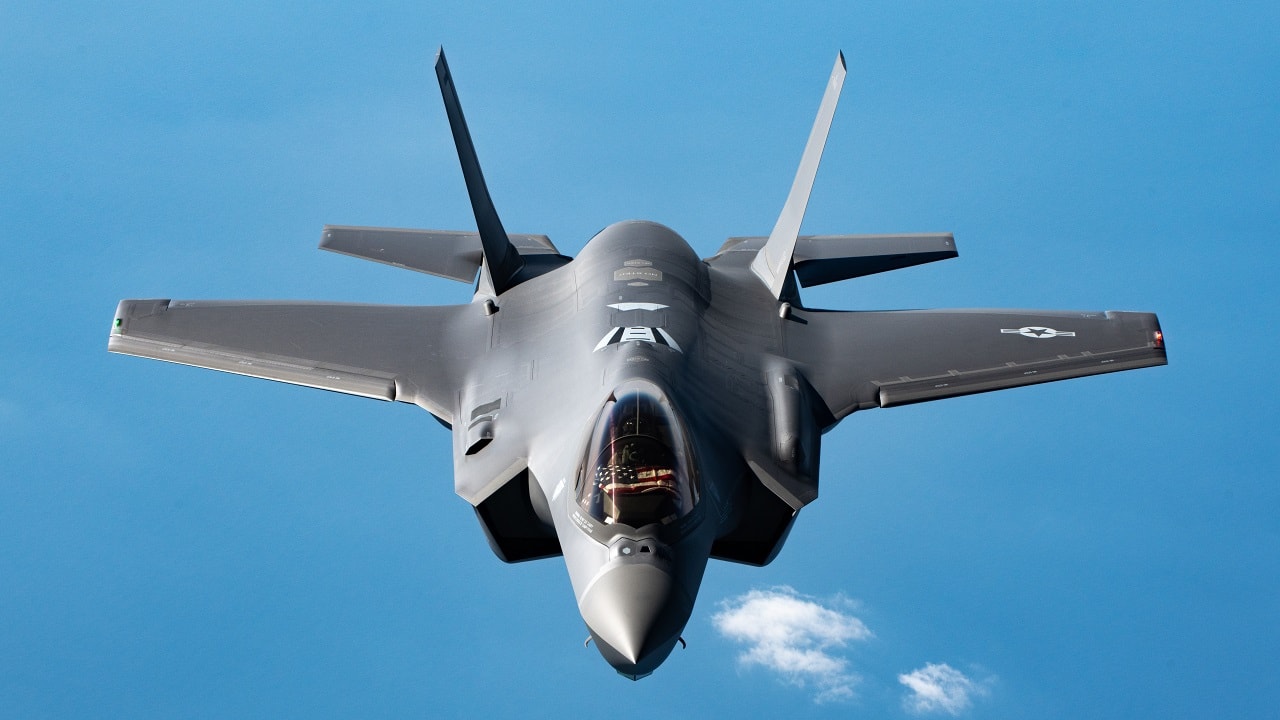The Pacific Ocean stretches over 9,000 miles from north to south, and more than 12,000 miles from east to west. Its size is a challenge for war planners, particularly those involved in air combat. Two such individuals are Lt. Col. Michael O’Brien, commanding officer (CO) of U.S. Marine Corps Fighter Attack Squadron 314 (VMFA 314) flying the F-35C, and Wing Commander Adrien Kiely, Royal Australian Air Force (RAAF), head of the No. 3 Squadron flying the F-35A.
The Need for Allied Integration
Last year, these two COs used a napkin to plan a rapid deployment of VMFA 314 and Squadron No. 3 to prepare for air combat operations in the Western Pacific. In doing so, they sought to capitalize on the quick reaction capabilities of the Marine Corps while integrating with partner nations in the region.
As O’Brien said: “Our lack of bureaucracy allows us to attack short-fuze missions such as preparing to deter China … a lot more aggressively than organizations that are a lot larger, such as the Air Force and Navy.”
However, this speed comes with drawbacks. F-35s require quite a bit of maintenance and logistics, which can prove challenging for a small, lithe force such as the Marine Corps, especially across the distances involved in the Western Pacific. As O’Brien says, “What we bring is manpower and firepower and aggressiveness, but we don’t necessarily bring the parts tail.”
F-35s in the Pacific for China Challenges
Enter Squadron No. 3. Although the F-35A is technically a different airframe, it is similar enough to the F-35Cs of VMFA 314 to make maintenance and supply virtually the same. The most noticeable difference between the two airframes is their size. The F-35C has a larger wingspan to give it greater control in slow speed regimes behind the carrier. These larger wings allow it to carry more fuel, giving it a longer range. Even this increased range is not enough to overcome the vast distances involved in Pacific operations, which makes the planned deployment with Squadron No. 3 an essential test of future effectiveness.
After training together last year in Nevada and Hawaii, the two squadrons are ready for a greater challenge. To that end, last month, VMFA 314 sent six of its fighters along with associated aircrew to Squadron No. 3’s homeport in Williamtown, New South Wales. There, the two units will practice fighting an air war in the Pacific with limited tanker and logistics support.
To do so, they intend to island hop much like Allied forces did during the Second World War, setting up small logistics and supply hubs at remote fields in places such as Malaysia and the Philippines. This will help solve what O’Brien calls the “time-distance-fuel problem.”
These small bases will allow the Marine Corps and RAAF to project high-tech air power into the Pacific without relying on vulnerable tanker assets. In order to get the most out of this plan, the two squadrons will rely on other partner nations in the region.
This deployment of VMFA 314 with Squadron No. 3 emphasizes the need for a strong partnership with nations in the Southern Pacific to deter Chinese aggression. Aside from the size and capabilities of the Chinese armed forces, the Pacific itself poses unique challenges for air combat. Integrating with RAAF forces and utilizing fields and facilities in other nations will help U.S. armed forces become much more capable in the region.
Maya Carlin, a Senior Editor for 19FortyFive, is an analyst with the Center for Security Policy and a former Anna Sobol Levy Fellow at IDC Herzliya in Israel. She has by-lines in many publications, including The National Interest, Jerusalem Post, and Times of Israel. You can follow her on Twitter: @MayaCarlin.
From 19FortyFive

